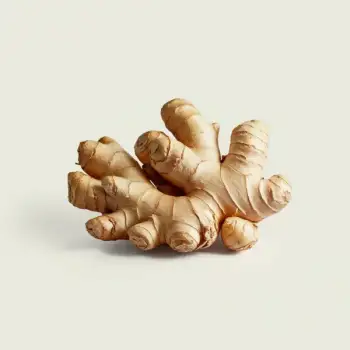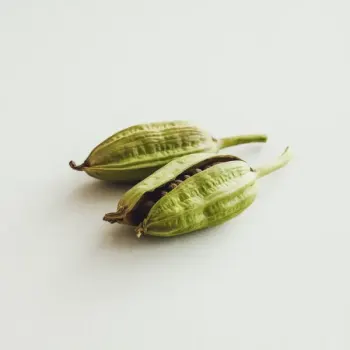Ginger and Cardamom are spices with unique flavors; ginger offers a peppery heat, ideal for teas and savory dishes, while cardamom adds sweet, aromatic notes to baked goods and curries. They can be substituted for each other to alter a dish's flavor profile.

Ginger, a rhizome of the Zingiber officinale plant, is celebrated worldwide for its peppery and slightly sweet flavor with a punch of heat. It's a staple in many Asian cuisines, both for its taste and medicinal properties.

Cardamom, the seed of a plant in the ginger family, is known for its complex aroma with hints of lemon, mint, and smoke. Used in both sweet and savory dishes, it's essential in Middle Eastern and Scandinavian baking and Indian cooking.
While both spices come from rhizomatous plants, ginger imparts a zesty and warming taste, whereas cardamom offers a sweet, floral, and eucalyptus-like flavor. Ginger is commonly used fresh or dried, while cardamom is typically found in pod or ground form. Their textural differences also influence how they're used in cooking, with ginger often grated or minced and cardamom added whole or ground.

Your ultimate Recipe Box, Meal Planner, and Cooking Class all in one
Ginger is a favorite for spicy, invigorating teas, like ginger tea or masala chai. It can also be used in cocktails for a zesty kick. When used, expect a warming and soothing effect. Cardamom lends a sophisticated, sweet note to teas and coffees, especially in the Middle East. It adds a fragrant depth to warm beverages and is often paired with cinnamon and cloves.
Ginger brings a warm, spicy flavor to baked goods like gingerbread, cookies, and cakes. The fresh or powdered form can be used to add a spicy note and can be balanced with sweeter flavors like honey. Cardamom's sweet and pungent flavor is perfect for Scandinavian pastries, Indian sweets, and spice cakes. It imparts a complex aroma that can elevate simple recipes to new heights.
In savory dishes like stir-fries, curries, and marinades, ginger adds a peppery heat and freshness. It pairs well with garlic and other spices to build flavor layers. Cardamom is often used in savory rice dishes, stews, and curries, particularly in Middle Eastern and Indian cuisines. Its eucalyptus-like flavor complements meats and vegetables.
Ginger can be substituted for cardamom when a recipe calls for a spicy, rather than sweet, flavor profile. Conversely, cardamom can replace ginger when a dish requires more aromatic sweetness. However, the unique flavors are not direct substitutes and will alter the recipe's final taste.
Both ginger and cardamom contain health-promoting properties and are used in traditional medicine.
| Nutrient | Ginger ( per Tablespoon ) | Cardamom ( per Tablespoon ) |
|---|---|---|
| Fat | 0.2g | 0.4g |
| Sodium | 1.8mg | 1mg |
| Protein | 0.4g | 0.6g |
| Calories | 18 | 18 |
| Carbohydrates | 3.6g | 3.9g |
| Dietary Fiber | 0.4g | 1.6g |
Not directly; ginger will add a spicy note whereas cardamom is more sweet and aromatic. The choice depends on the desired flavor profile of the dish.
Yes, both spices are commonly used together in Indian and Middle Eastern curries and stews to create a layered spice profile.
Ginger has a noticeable heat which cardamom lacks; cardamom's flavor is more about sweet and floral notes.
Ginger is best stored in the refrigerator or freezer, while cardamom should be kept in an airtight container in a cool, dark place.
Yes, both are known to have digestive benefits and are often used in traditional remedies for indigestion.